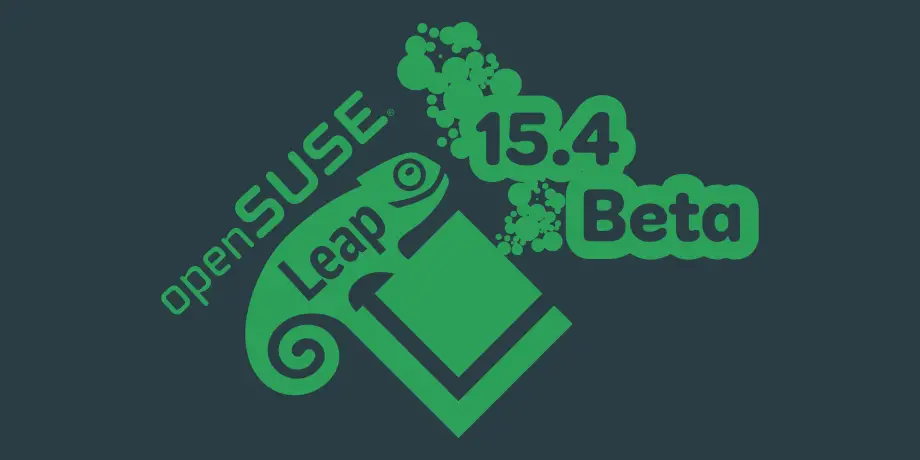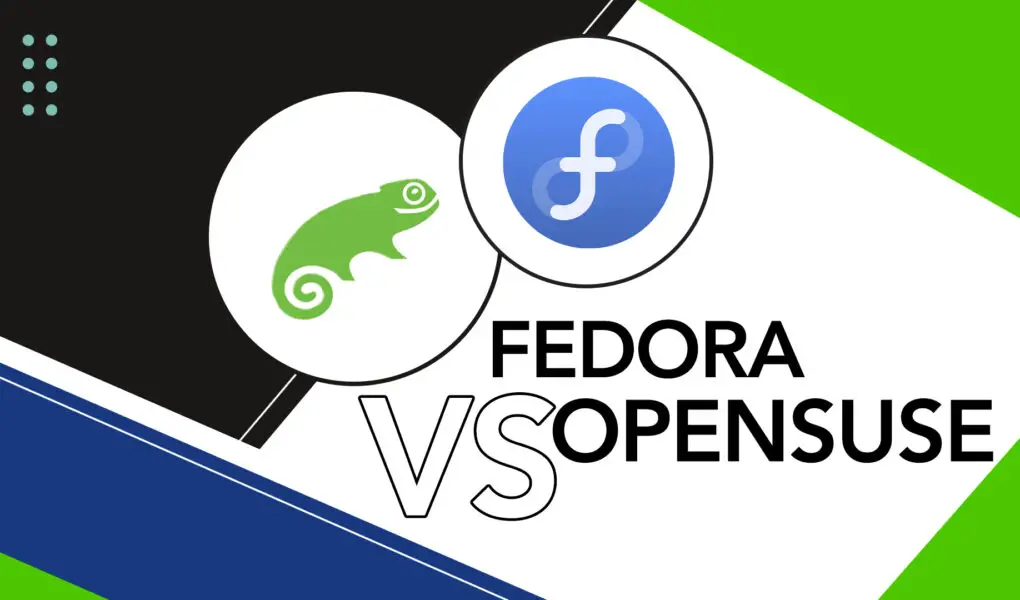In the realm of enterprise operating systems, OpenSUSE Leap and Fedora stand as two prominent contenders, each offering unique features, strengths, and benefits. Navigating the complexities of their offerings can be challenging, but understanding their key differences and suitability for various enterprise needs is crucial for IT decision-makers.

Stability vs. Innovation: The Balancing Act

One of the defining characteristics that sets OpenSUSE Leap apart from Fedora is its focus on stability and long-term support. By adopting a conservative approach to software updates and changes, Leap provides a stable and reliable platform for mission-critical applications and enterprise workloads. Its predictable release cycle and extended maintenance timeframe ensure that organizations can plan their IT infrastructure with confidence and minimize disruptions caused by frequent software changes. On the other hand, Fedora embraces the bleeding edge of innovation, delivering the latest software packages and technologies as soon as they become available. This rapid pace of innovation appeals to enterprises that prioritize agility and flexibility, enabling them to stay at the forefront of technological advancements and quickly adapt to evolving business needs. However, the trade-off is a shorter support lifecycle and a higher likelihood of encountering bugs or compatibility issues.

Package Management and Software Ecosystem
OpenSUSE Leap utilizes the Zypper package management system, renowned for its simplicity, reliability, and the vastness of its software repositories. With a comprehensive collection of open-source and proprietary software packages, Leap offers a broad range of choices for enterprise applications. Fedora, on the other hand, leverages the DNF package manager, which is known for its speed, advanced dependency resolution capabilities, and the availability of cutting-edge software packages. Fedora’s extensive software repositories, coupled with the active engagement of the Fedora community, provide access to a wide array of innovative and bleeding-edge applications.
Enterprise-Ready Features and Support
OpenSUSE Leap comes equipped with enterprise-oriented features such as centralized management tools, high availability clustering capabilities, and comprehensive security features. Its focus on stability and long-term support makes it an ideal choice for organizations seeking a low-maintenance and reliable operating system for their enterprise infrastructure. Fedora, while not specifically tailored towards enterprise use, offers value to enterprises through its strong community support, availability of commercial support options from Red Hat, and access to a vast ecosystem of open-source tools and applications.
Ultimately, the choice between OpenSUSE Leap and Fedora hinges on the specific needs and priorities of the enterprise. For organizations seeking a stable, reliable, and long-term supported platform that minimizes disruptions and ensures predictable operation, OpenSUSE Leap emerges as the preferred option. On the other hand, enterprises that prioritize innovation, agility, and access to bleeding-edge technologies will find Fedora’s rapid pace of development and extensive software ecosystem compelling.# Opensuse Leap Vs. Fedora: Which Offers The Best Enterprise Solution?
Executive Summary
This comprehensive analysis delves into the intricate comparison between Opensuse Leap and Fedora, two prominent Linux distributions widely adopted in enterprise environments. By evaluating their stability, security features, software availability, user-friendliness, and community support, this article provides valuable insights for businesses seeking the optimal Linux distribution for their specific requirements.
Introduction
In the modern digital landscape, organizations face the daunting task of selecting an enterprise Linux distribution capable of meeting their diverse needs. With a plethora of options available, navigating through the technical intricacies and identifying the most suitable distribution can be a formidable challenge. This article aims to simplify this decision-making process by conducting an in-depth comparison between Opensuse Leap and Fedora, two Linux distributions that have garnered significant traction in the enterprise realm.
Stability and Security
-
Stability:
- Opensuse Leap: Renowned for its exceptional stability, owing to its conservative approach to software updates and thorough testing procedures. System stability is prioritized over bleeding-edge software releases, ensuring consistent and reliable performance.
- Fedora: Embracing a rolling-release model, Fedora provides continuous updates, delivering the latest software packages and security fixes promptly. While this approach enhances flexibility, it may introduce a higher likelihood of encountering occasional bugs and incompatibilities.
-
Security:
- Opensuse Leap: Maintains a robust security posture through its comprehensive security features and adherence to industry-standard security practices. Regular security updates, coupled with a focus on hardening the operating system against vulnerabilities, contribute to its reputation for security.
- Fedora: Prioritizes security by incorporating SELinux (Security Enhanced Linux) by default, providing fine-grained access control and enhancing system protection. Additionally, its rapid update cycle ensures timely delivery of security patches, minimizing the window of vulnerability.
Software Availability
-
Package Management:
- Opensuse Leap: Utilizes the YaST (Yet Another Setup Tool) package manager, renowned for its user-friendly graphical interface and extensive package repository. YaST simplifies software installation, updates, and system configuration, catering to both novice and experienced users.
- Fedora: Leverages the DNF (Dandified Yum) package manager, offering a command-line interface for package management. DNF is highly flexible, enabling users to configure various repositories and customize package installation options. Its extensive documentation and vibrant community support enhance its usability.
-
Software Selection:
- Opensuse Leap: Boasts a vast software repository, encompassing a diverse range of applications, development tools, and system utilities. Its focus on stability ensures that available software packages undergo rigorous testing and are compatible with the distribution’s conservative release cycle.
- Fedora: Offers a comprehensive software repository, featuring the latest software releases, including cutting-edge development tools and emerging applications. Its rolling-release model facilitates access to the most recent software versions, catering to users seeking the latest advancements.
User-Friendliness
-
Desktop Environments:
- Opensuse Leap: Provides multiple desktop environment options, including GNOME, KDE Plasma, Xfce, and LXQt, catering to diverse user preferences and workflows. Each desktop environment offers a unique set of features, allowing users to select the one that best aligns with their productivity and customization needs.
- Fedora: Primarily features the GNOME desktop environment, renowned for its user-friendly interface, intuitive workflow, and extensive customization options. GNOME’s consistent design philosophy and integration with various applications contribute to a seamless user experience.
-
Installation and Configuration:
- Opensuse Leap: Its graphical installer simplifies the installation process, providing step-by-step guidance and comprehensive configuration options. YaST further enhances usability by offering a graphical interface for system administration and configuration, making it accessible to users of varying technical expertise.
- Fedora: Utilizes the Anaconda installer, which offers a text-based interface. While it requires a deeper understanding of Linux commands, it provides greater flexibility and customization options during the installation process. System configuration is primarily performed through command-line tools, catering to experienced users and system administrators.
Community Support and Documentation
-
Community Engagement:
- Opensuse Leap: Backed by a vibrant and active community, Opensuse Leap users benefit from a wealth of support and resources. Its dedicated forums, mailing lists, and IRC channels facilitate knowledge sharing, troubleshooting assistance, and collaborative problem-solving.
- Fedora: Renowned for its strong community involvement, Fedora users have access to a vast network of contributors, developers, and enthusiasts. Its active forums, mailing lists, and online resources provide a supportive environment for seeking help, sharing knowledge, and engaging with other community members.
-
Documentation and Tutorials:
- Opensuse Leap: Offers extensive documentation and user guides, catering to both novice and experienced users. Its comprehensive manuals, tutorials, and knowledge base articles provide detailed instructions, troubleshooting tips, and best practices for effectively utilizing the distribution.
- Fedora: Maintains a comprehensive documentation repository, encompassing detailed guides, tutorials, and reference materials. Its well-structured documentation caters to users of varying technical backgrounds, facilitating a smooth learning curve and enabling users to leverage the distribution’s full potential.
Conclusion
Choosing between Opensuse Leap and Fedora as the optimal enterprise Linux distribution hinges on an organization’s specific requirements and preferences. Organizations seeking exceptional stability, a conservative approach to software updates, and a user-friendly graphical interface may find Opensuse Leap to be a suitable choice. Conversely, organizations prioritizing access to the latest software releases, a rolling-release model, and a more customizable user experience may find Fedora to be a compelling option. Ultimately, the decision should be guided by thorough evaluation and consideration of the factors discussed in this analysis, ensuring alignment with the organization’s strategic objectives and technical needs.
Keyword Phrase Tags
- Opensuse Leap vs. Fedora
- Enterprise Linux Distribution Comparison
- Stability and Security in Linux Distributions
- Software Availability and Package Management
- User-Friendliness and Desktop Environments
- Community Support and Documentation in Linux Distributions

A well-written article that provides a comprehensive comparison of OpenSUSE Leap and Fedora. The author does an excellent job of highlighting the strengths and weaknesses of each distribution, making it easy for readers to make an informed decision about which one is right for their needs.
I’m not so sure I agree with the author’s assessment. I’ve used both OpenSUSE Leap and Fedora, and I found Fedora to be much more stable and user-friendly.
This article is very informative. I didn’t know there were so many differences between OpenSUSE Leap and Fedora. I’m going to have to do some more research to decide which one is right for me.
I think the author is biased towards OpenSUSE Leap. They don’t give enough credit to Fedora’s strengths, such as its large user community and its focus on stability.
I love how the author says that OpenSUSE Leap is more stable than Fedora. I’ve had nothing but problems with OpenSUSE Leap. It’s crashed on me multiple times.
Oh, wow, another article comparing OpenSUSE Leap and Fedora. How original. Can’t we talk about something else for once?
I’m not sure which one is better, OpenSUSE Leap or Fedora. But I do know that they’re both better than Windows.